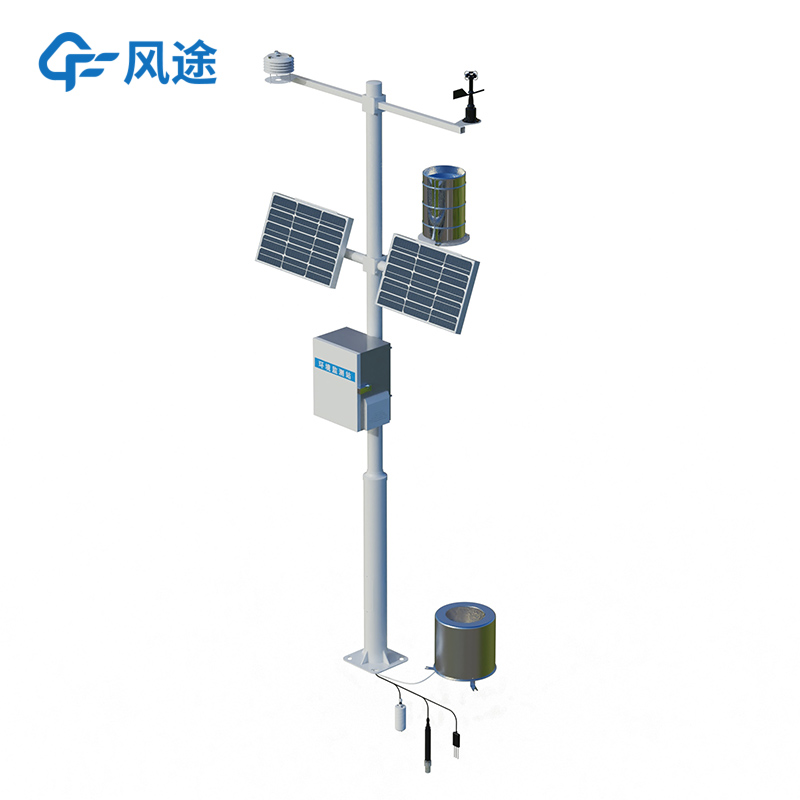Tianqiong Sensor IOT Technology Co., Ltd
Sales Manager:Ms. Emily Wang
Cel,Whatsapp,Wechat:+86 15898932201
Email:info@fengtutec.com
Add:No. 155 Optoelectronic Industry Accelerator, Gaoxin District, Weifang, Shandong, China

Sales Manager:Ms. Emily Wang
Cel,Whatsapp,Wechat:+86 15898932201
Email:info@fengtutec.com
Add:No. 155 Optoelectronic Industry Accelerator, Gaoxin District, Weifang, Shandong, China
time:2025-04-14 10:57:19 source:Weather Station viewed:167 time
Agricultural production is closely related to weather changes, and weather conditions play a decisive role in the growth, development, and final yield of crops. Torrential rains may trigger floods, submerge farmland, and damage crops. Droughts, on the other hand, can lead to insufficient soil moisture, hindering the growth of crops and even causing them to wither and die. During the critical growth periods of crops, low temperatures and frost may cause frost damage to the crops, severely affecting the harvest. According to statistics, the global agricultural losses caused by meteorological disasters reach billions of dollars every year, and weather difficulties have become a huge obstacle on the path of agricultural development.
To address these challenges, meteorological monitoring uses professional equipment and technologies to conduct real-time monitoring and data collection of meteorological elements such as wind speed, wind direction, temperature, humidity, air pressure, and precipitation. These data can help agricultural practitioners understand the trends of weather changes in advance and thus take corresponding preventive measures. For example, before a torrential rain arrives, the drainage channels can be dredged in a timely manner to avoid waterlogging in the farmland. After a drought warning is issued, the irrigation plan can be arranged in advance to ensure the water supply for the crops.
Among the many meteorological monitoring devices, Agricultural Weather Stations are professional devices that integrate a variety of technologies and can automatically and accurately observe and store meteorological data. It is equipped with a series of high-precision sensors that can monitor meteorological elements such as wind speed, wind direction, temperature, humidity, air pressure, and grass temperature in real time, as well as the changes in data crucial to agricultural production, such as soil moisture content. Through the communication interface, these data can be quickly transmitted to relevant devices or platforms, making it convenient for agricultural producers to check at any time.
Agricultural Weather Stations have intelligent data analysis and processing functions. Based on the collected data, combined with the growth characteristics of crops and meteorological models, it can provide farmers with precise agricultural advice, such as when to sow, irrigate, fertilize, and how to prevent meteorological disasters. When facing severe weather, Agricultural Weather Stations can issue early warning information in a timely manner, reminding farmers to take protective measures and minimizing the losses caused by meteorological disasters to the greatest extent. With the characteristics of convenience, accuracy, and intelligence, Agricultural Weather Stations are becoming an indispensable part of the development of modern smart agriculture, safeguarding agricultural production and helping agriculture achieve efficient and stable development.

The FT-WQX6 micro weather sensor is a highly integrated device that combines multiple meteorological parameter measurement functions. Its key feature is the integration of six basic meteorological parameters—ambient temperature, relative humidity, wind speed, wind direction, atmospheric pressure, a...
A rainfall monitoring station is an intelligent system that uses high-tech means to obtain real-time rainfall data. It achieves this by deploying rain gauge stations in different regions, which act as the "eyes and ears" of the system, constantly monitoring rainfall conditions in their sur...
In fields such as agricultural production, outdoor sports, and transportation, accurately grasping weather conditions is crucial. Although traditional large-scale weather stations can provide macro meteorological data, they have shortcomings in monitoring accuracy in local areas and are difficult to...
The petrochemical production process involves a large number of flammable and explosive chemical substances, such as crude oil, gasoline, ethylene, and so on. During storage, transportation, and production, these substances can easily trigger explosions and fires once they encounter an ignition sour...